A list of 29,000 people who were executed by Assad’s prison killers has reportedly been discovered in his human slaughterhouse prison.
Syrian rebels discovered what has been called the Book of Death while ransacking the infamous Sednaya prison, where tortured bodies and piles of old cloth were also found.
Sick footage captured the group unearthing the thick binder in which the devastating 29,000 names of dead prisoners were tallied as they were tracked down over a few years.
At least 10 rebels gathered around the book in disbelief as they flipped through the pages, with hundreds of names scattered on each page.
In the horror clip, a man talks about the shocking discovery, which also included a cache of other documents that Assad’s army failed to destroy.
The Syrian goes on to explain how the group plans to use “each of the names” in the book to find the families of the deceased and contact them to inform them of the tragic news of their loved ones.
The rebel stressed: ‘Gather them, preserve them, keep them safe and free them.’
In a heartbreaking moment, he then goes on to read aloud the names, dates of birth and the gruesome method used to execute the people listed in the vile discovery.
Syrian rebels discovered what is known as the Book of Death while ransacking the infamous Sednaya prison in Damascus.
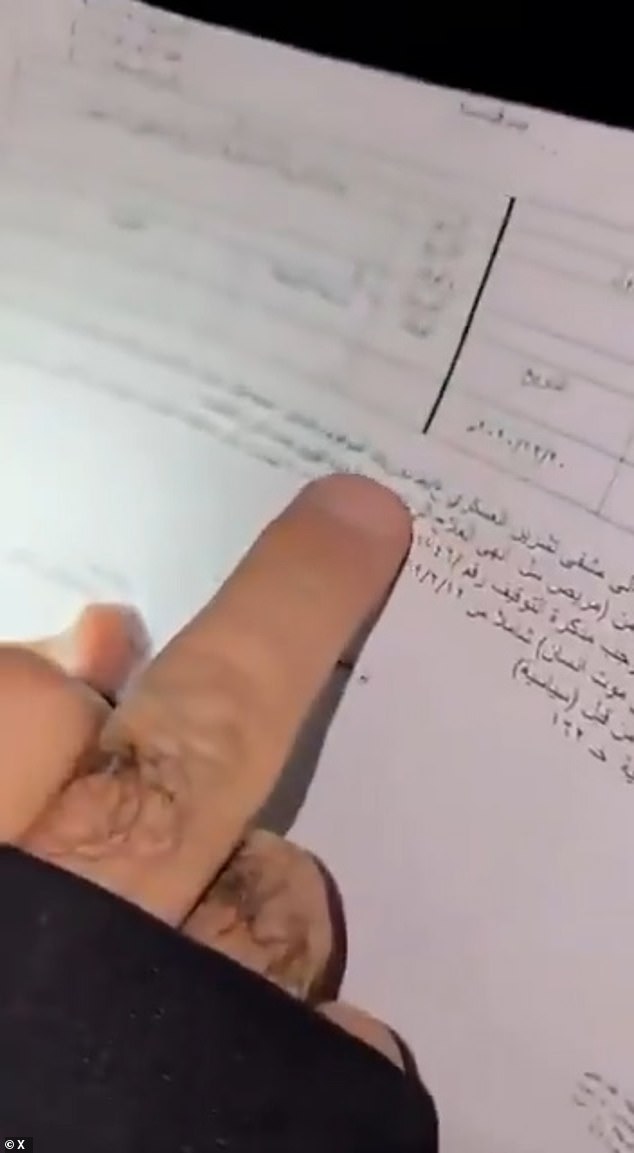
The book included a staggering 29,000 names of people who died in prison.
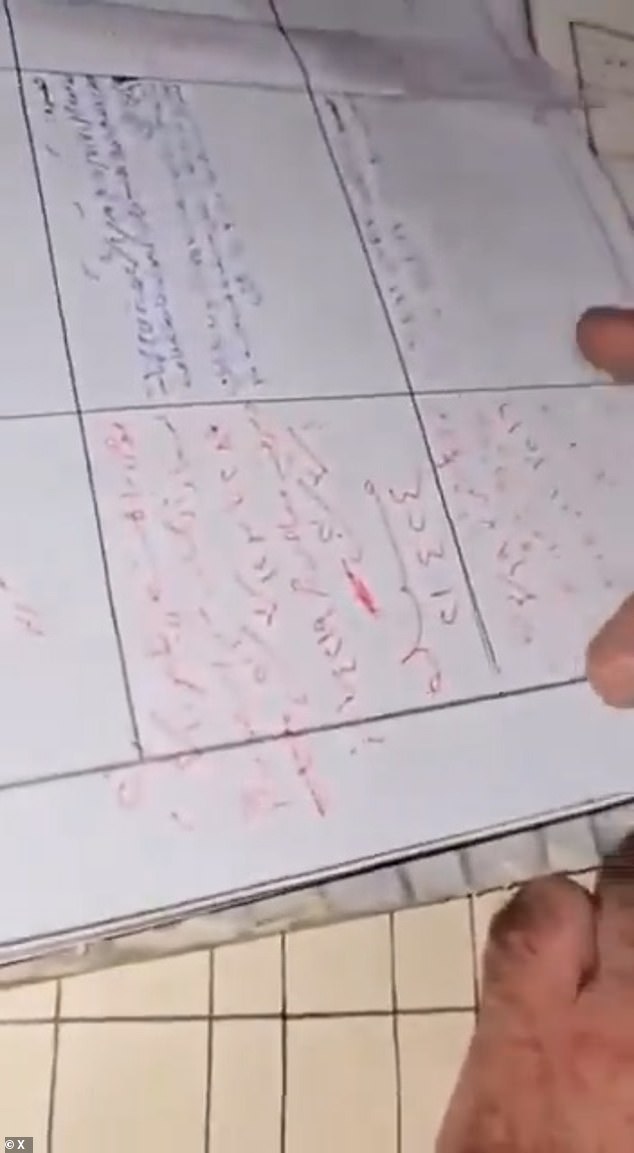
At least 10 rebels gathered around the book in disbelief as they flipped through the pages, with hundreds of names scattered on each page.
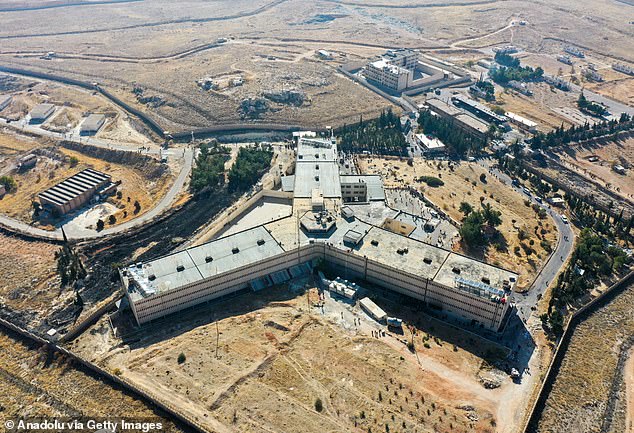
An aerial view of the Sednaya military prison after armed groups opposing the Syrian regime of Bashar al-Assad took control in Damascus.
He even points out how “field executions” are documented in the book before insisting on telling his fellow rebels to be careful not to tear or destroy the papers.
‘People, we must contribute to preserving these properties.
“The regime broke the cameras and destroyed the hard drives, so that these crimes would not be exposed,” he says defiantly.
Syrian rebels continue their investigations in Sednaya prison after the release of several relatives missing after the fall of President Bashar al-Assad.
The infamous prison near Damascus, nicknamed the “Human Slaughterhouse”, is the epicenter of systematic terror in which large numbers of detainees were subjected to all kinds of inhuman treatment and executed.
Dark images and footage released this week showed how horrified rescuers pulled dozens upon dozens of body bags containing decomposing corpses from deep within the facility.
For most detainees, the horror began immediately after arrest, often with savage beatings on the way to detention centers.
The prisoners endured brutal ‘welcome parties’, where they were flogged with hoses, silicone bars and wooden sticks.
Survivors have described being suspended by their wrists for hours, suffering electric shocks and being burned with cigarettes, in horrific accounts provided to the New York Times and Amnesty International.
Once trapped behind bars, prisoners quickly became familiar with all sorts of novel torture methods, some so notorious that they were given obscure nicknames.
In one such grotesque device, nicknamed the “flying carpet,” prisoners were chained to a board attached to a flexible board divided in half by metal chain hinges.
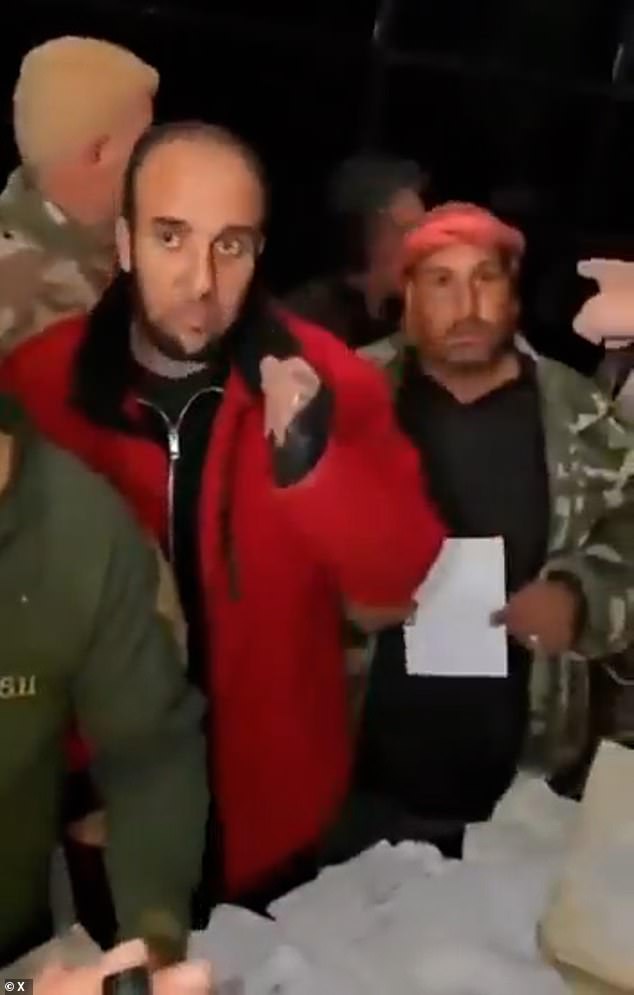
The rebel even points out how “field executions” are documented in the book before going on to tell his fellow rebels to be careful not to tear or destroy the papers.
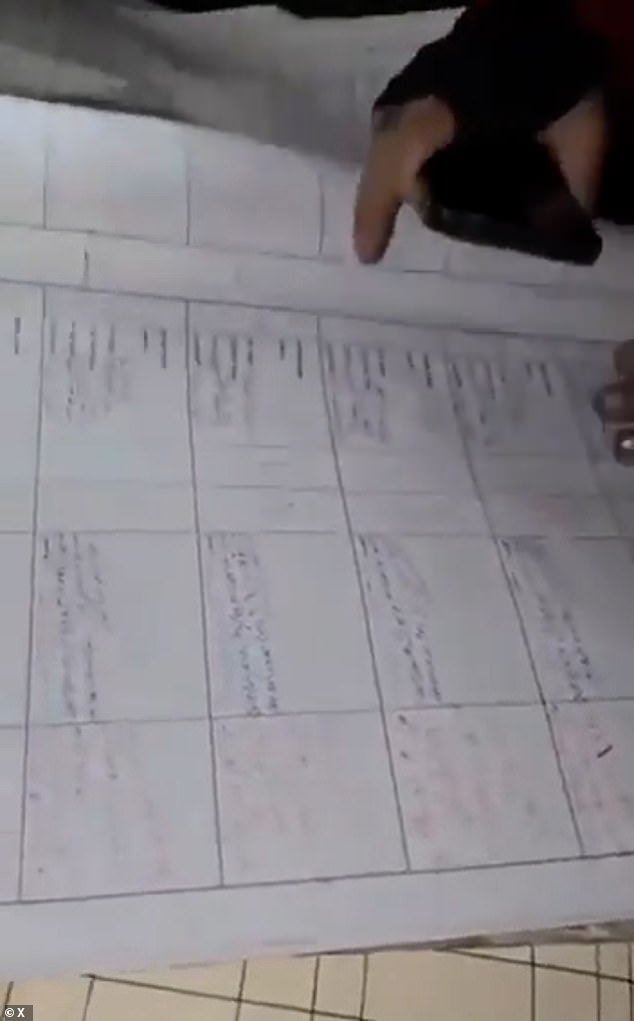
Syrian rebels continue their investigations in Sednaya prison after the release of several relatives missing after the fall of President Bashar al-Assad.
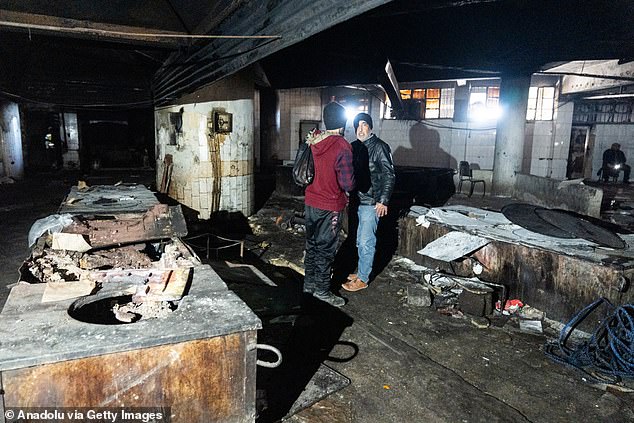
People are seen at the Sednaya military prison after armed groups opposing the Syrian regime of Bashar al-Assad took control in Damascus.
The guards would then lift the bottom half of the board and bend the prisoner’s legs towards them, slowly and excruciatingly crushing them into horrible positions.
Another such torture tactic was called ‘dulab’, in which victims’ bodies were contorted into rubber tires, with their heads pressed against their knees, before being rolled and beaten mercilessly.
Assad previously denied killing thousands of detainees at Sednaya and using a secret crematorium to dispose of their remains in 2017.
Many detainees have revealed that they were raped while incarcerated and, in some cases, forced to rape other inmates.
Torture and severe beatings by guards were used as a common form of punishment and degradation, often resulting in people suffering lifelong damage, disabilities, and even death.
Cell floors were covered in blood and pus from injured prisoners, according to a 2017 Amnesty report, and prison guards collected the bodies of dead detainees each morning at 9 a.m.
Detainees at Sednaya Prison were forced to obey a series of sadistic and dehumanizing rules, while staff deprived them of food, water, medicine and medical care.
When food was delivered, guards often scattered it on the cell floor, where it mixed with blood and dirt, forcing detainees to ingest the gruesome bodily fluids left behind by the wounded and murdered.
It was also reported that an iron press that was allegedly used to crush and execute prisoners in Sednaya prison was found in new videos shared by rebels while releasing inmates.
Human Rights Watch identified 27 detention centers that it said intelligence agencies had been using since Assad’s government began an offensive in March 2011 against pro-democracy protesters trying to overthrow him.

